Marine Life Unit: Fish
The Marine Life Unit: Fish explores the habitat and anatomy of marine life through a variety of expeditionary learning activities in the field, in the galleries, in the classroom, and in the art studio. Students integrate scientific illustration and informative writing as they create sea sculptures and sensory poetry. Students consider issues of sustainability as they create their work of art using found objects and recycled materials.
This unit is inspired by the work of students, educators, museum educators, and teaching artists in the Stories of the Land and Its People program.
Trash Fish sculpture by 4th grade students in the Stories Program (2017)
Vocabulary:
Shape
Color
Size + Scale
Composition
Texture
Scientific Illustration
Sculpture
Contrast
Curricular Connections:
Scientific Illustration / Anatomy
Marine Life (Fish)
Industry / Economy
Environment / Conservation
Quantitative / Qualitative Research
Descriptive Writing / Informative Writing
Sensory Writing / Poetry
Measurements
Farnsworth Collection:
Notice these works of art in the Farnsworth collection to begin your exploration of marine life in New England.
Activity:
Inquiry: What can we learn about marine life by looking at these works of art? What further questions do you have? Document your questions and ideas.
Notice: Notice works of art in the Farnsworth collection. What is the subject or main idea? What do you notice about color and composition?
Create: Use paper color swatches to recreate a composition. How can you arrange the colors to help create dimension?
Activity
Create: Create a color wheel! Review primary and secondary colors and keep your wheel as an important reference throughout the project.
Reflect + Create: Consider how color can help create dimension. Draw a circle and practice creating dimension with highlighting and shading techniques. How can you make a “flat” object appear “round?”
Create: Continue to explore with color as you begin to illustrate more advanced objects!
Activity:
Create: Create your own scientific illustration journal. Use watercolor paper so that you may paint directly onto your journal as you learn. Card stock or a thicker weight paper for the cover will help provide a hard surface for documenting your work in the field.
Expedition: Visit a local beach and document what you see, smell, hear, and feel. Select a specimen to study. Sketch the object and write down key information. Take a photograph of your specimen so that you may continue your work back in the classroom.
Create + Connect: Using your reference photo and information, add detail to your sketch. Include color, shading, and texture. Research the common and scientific name for your object. Document your findings.
Students in the Stories Program noticed trash on the beach during their expedition. After considering the impacts to the environment, the students chose to clean the beach! They later used the cleaned trash to create a found object sculpture.
Interactive Film:
Create a sketch book with teaching artist Tara Morin!
Activity:
Notice + Connect: Study the anatomy or the parts of a fish. Notice a specimen or a photograph of a specimen as source material for your scientific illustration and research.
Connect: After studying a similar specimen together, encourage your students to “adopt a fish” of their choice to learn about. What are common features? What differs? For example, consider size and scale. How does your fish move? What is their behavior?
Educators in the Stories Program attend a professional development workshop with scientific illustrator Karen Talbot.
Activity:
Expedition + Curricular Connections: Connect with local scientists and fishing professionals to learn more about your local marine industries. Consider how industries such as kelp farming may help support both the environment and the economy.
Students in the Stories program visit Herring Gut Learning Center to learn more about kelp farming.
Reflect + Connect: Following your expedition, review your research and ask further questions. What are you curious about?
Create: Further practice your scientific illustration skills with illustrations of seaweed. Consider shape, color, and texture as you draw. If you are able to study specimens, document how it feels and smells.
Activity:
Create: Reflect on your scientific illustrations and develop a scaled model of your specimen. Use recycled materials to create your sculpture.
Create: Build on your study of color theory and anatomy as you paint your sculpture. How can you create depth and reflection? How can dark and light colors illustrate key characteristics of your fish?
Reflect: Consider how your process changed as you shifted from a 2-dimensional drawing to a 3-dimensional sculpture. What did you learn?
Students use recycled newspaper and found objects in the classroom to create the base of their sculpture.
Activity:
Create: Collect clean trash or single-use objects as your materials for your marine sculpture.
Connect: “Trash Fish” are fish that we could eat more of (but often throw out) to help create a more sustainable fishery. Create a sculpture of a “trash fish” out of trash. Study the anatomy of your fish and curate your trash by size, shape, and texture to best illustrate your specimen. Can you estimate how long it will take your sculpture to decompose?
Students curate their trash as they explore a variety of layouts for their “trash fish” sculpture.
Gallery of Student Work:


























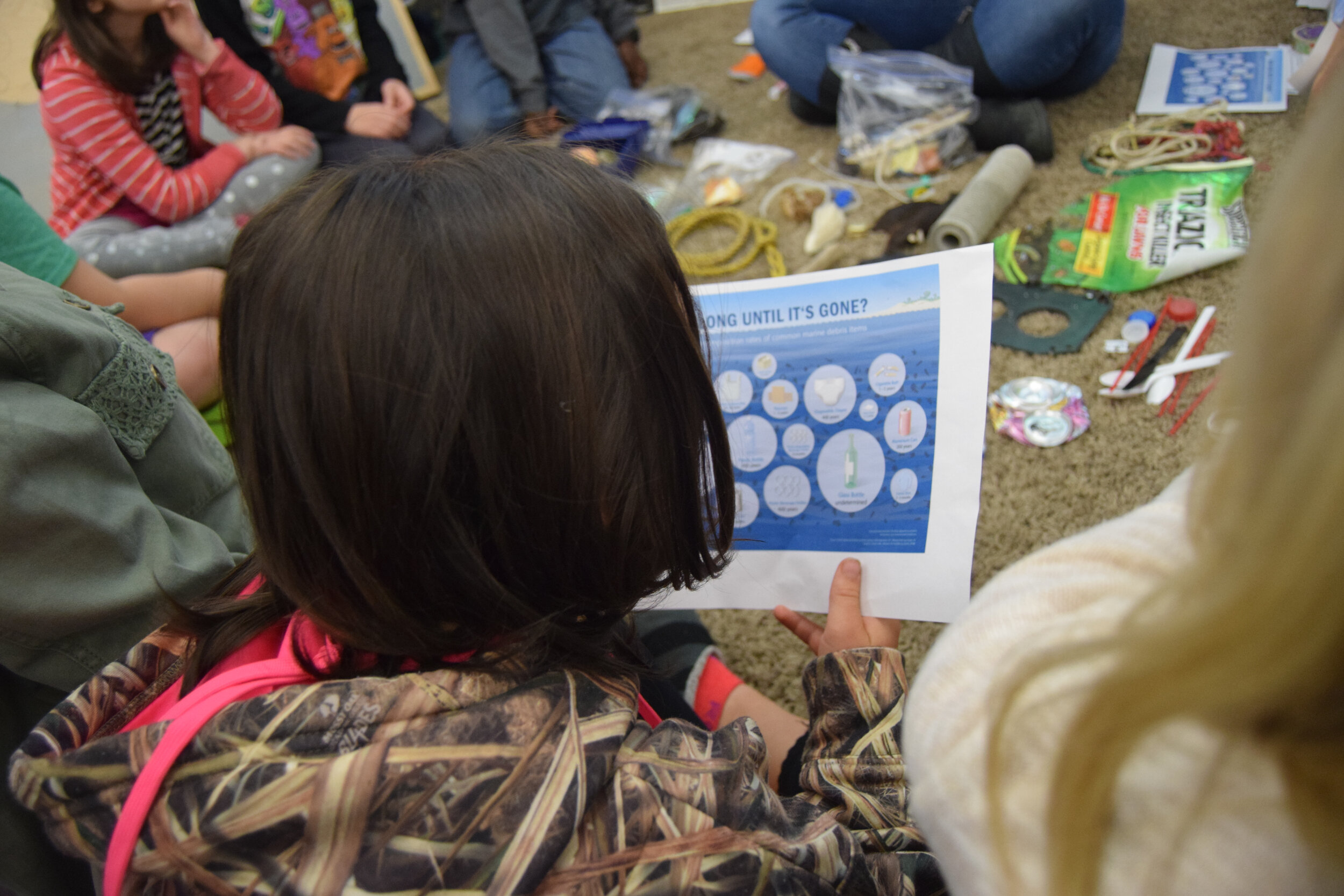
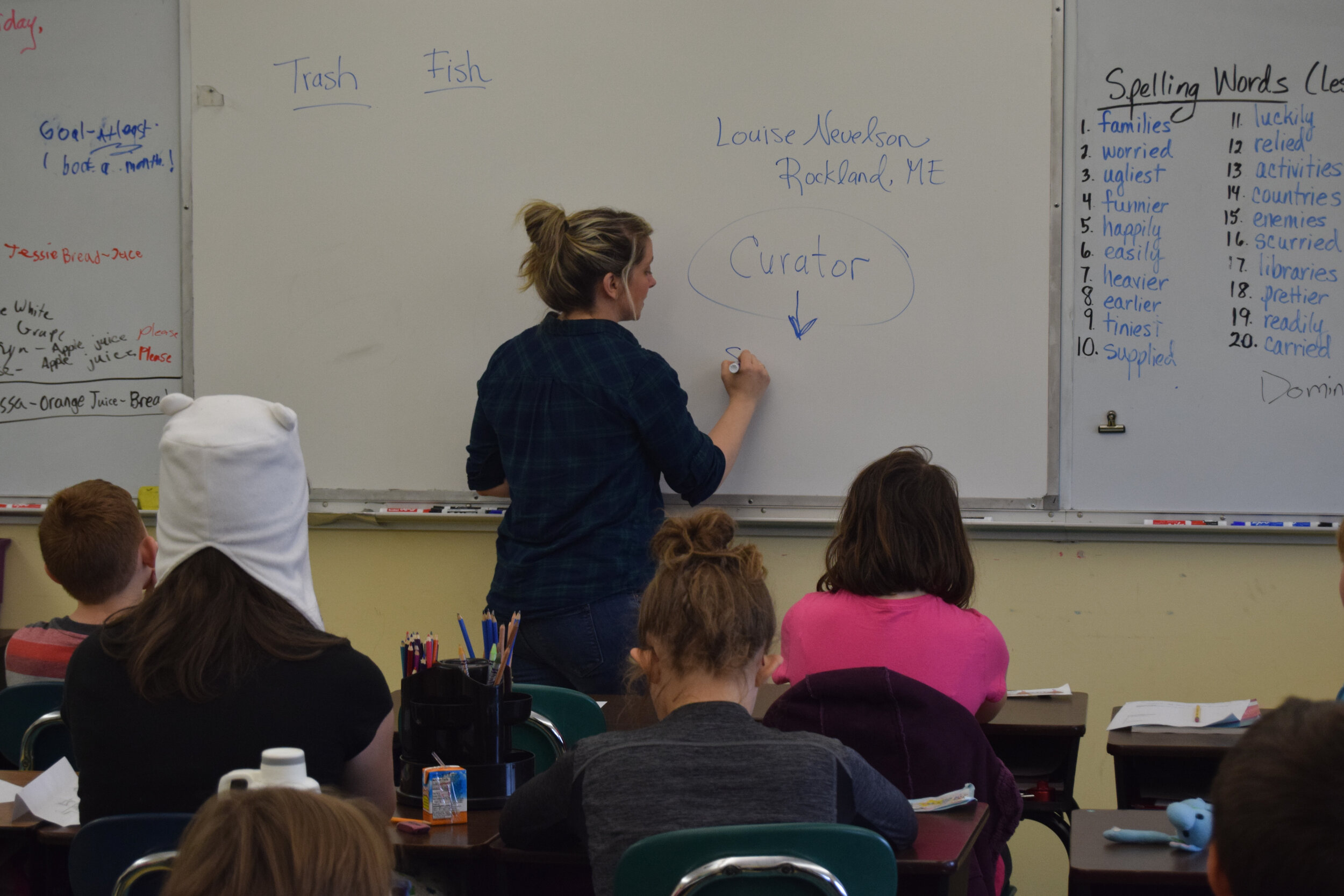
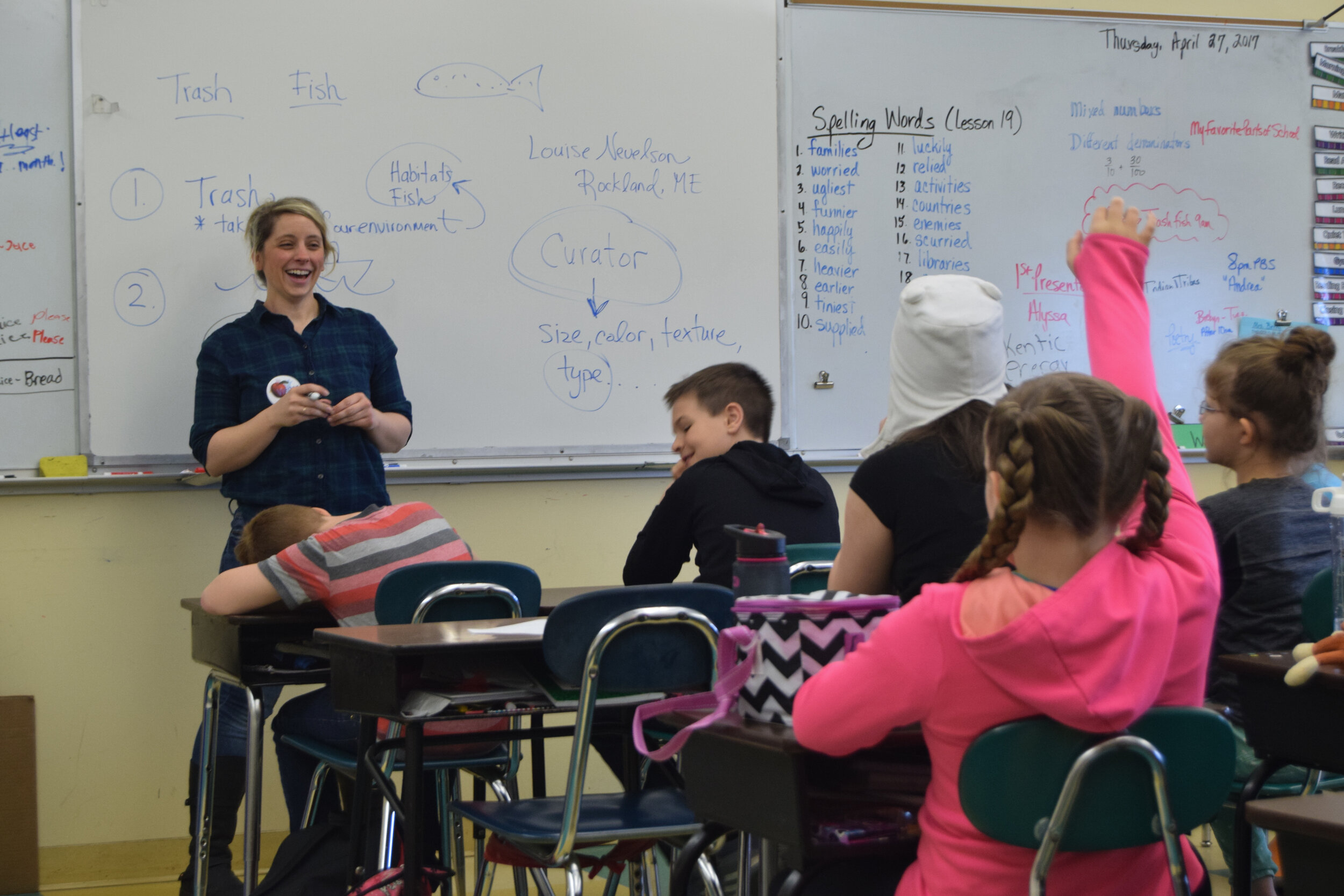
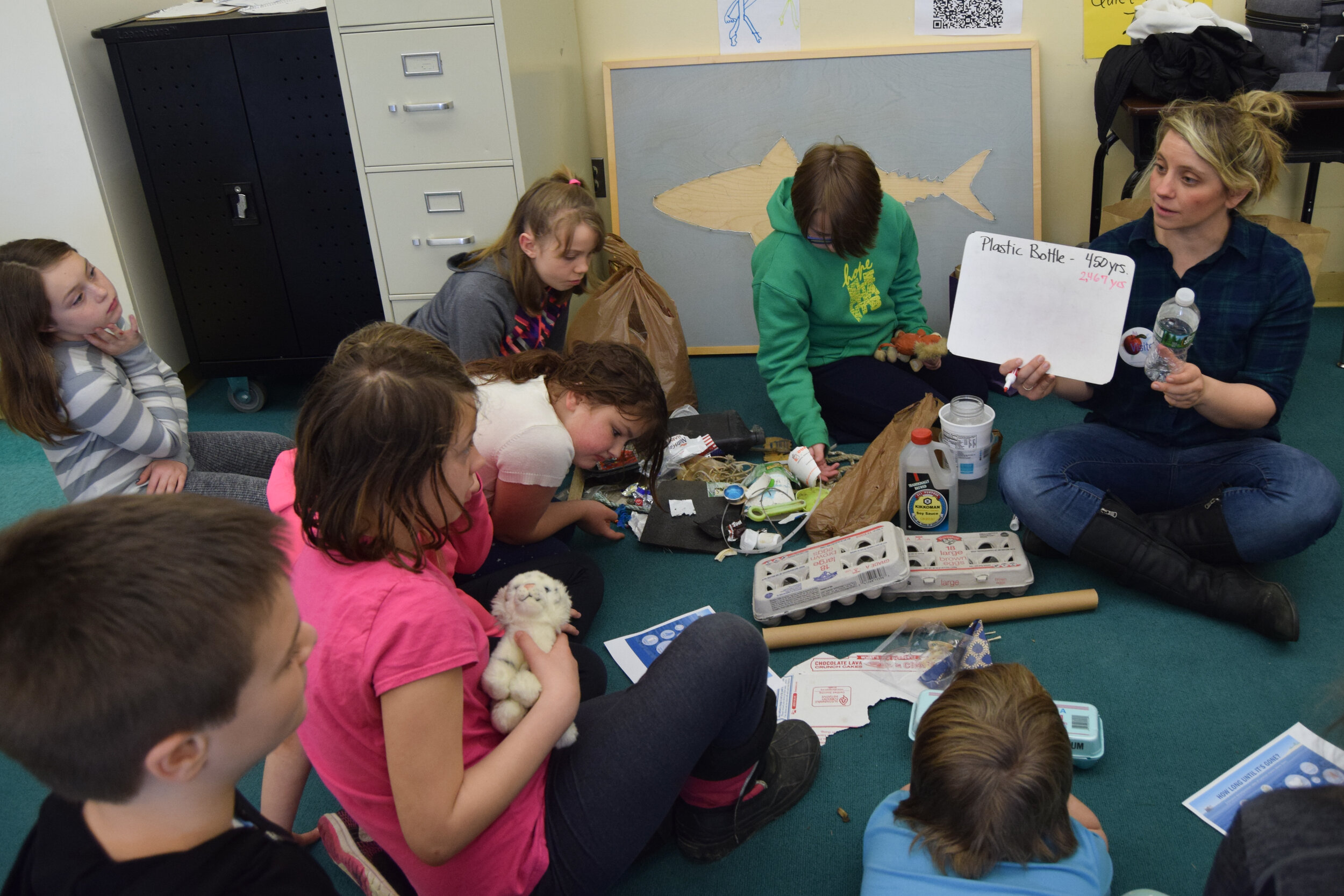

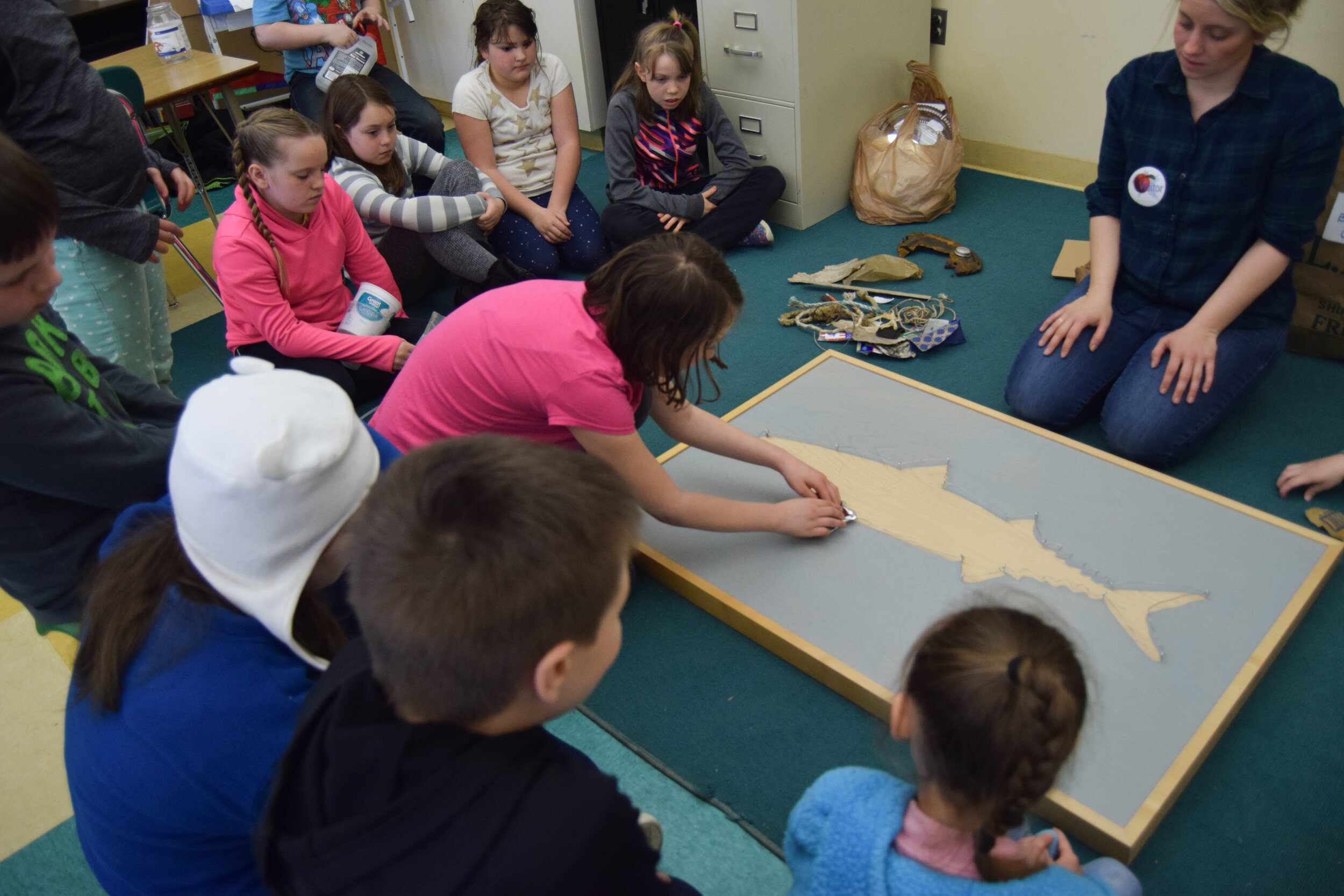
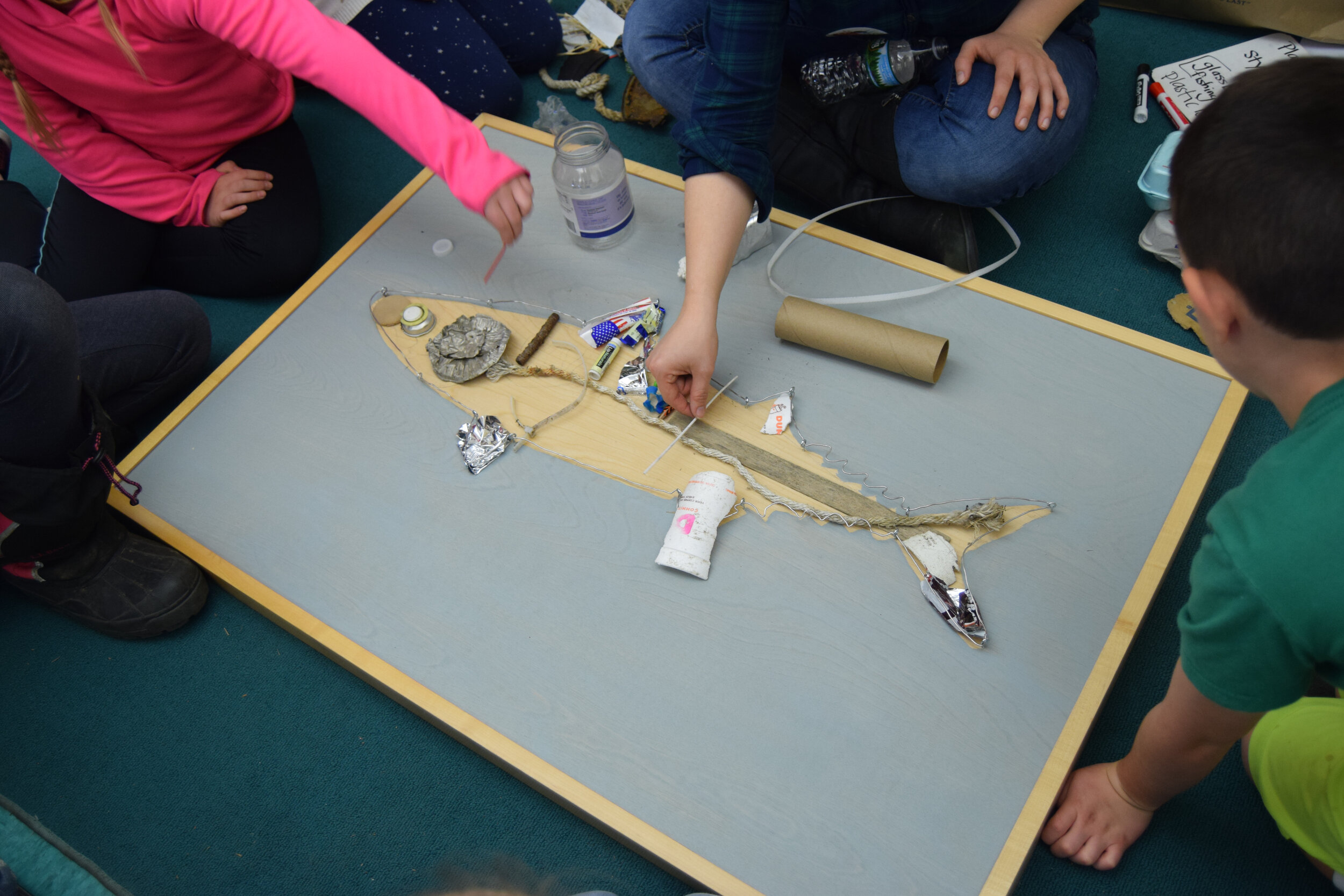
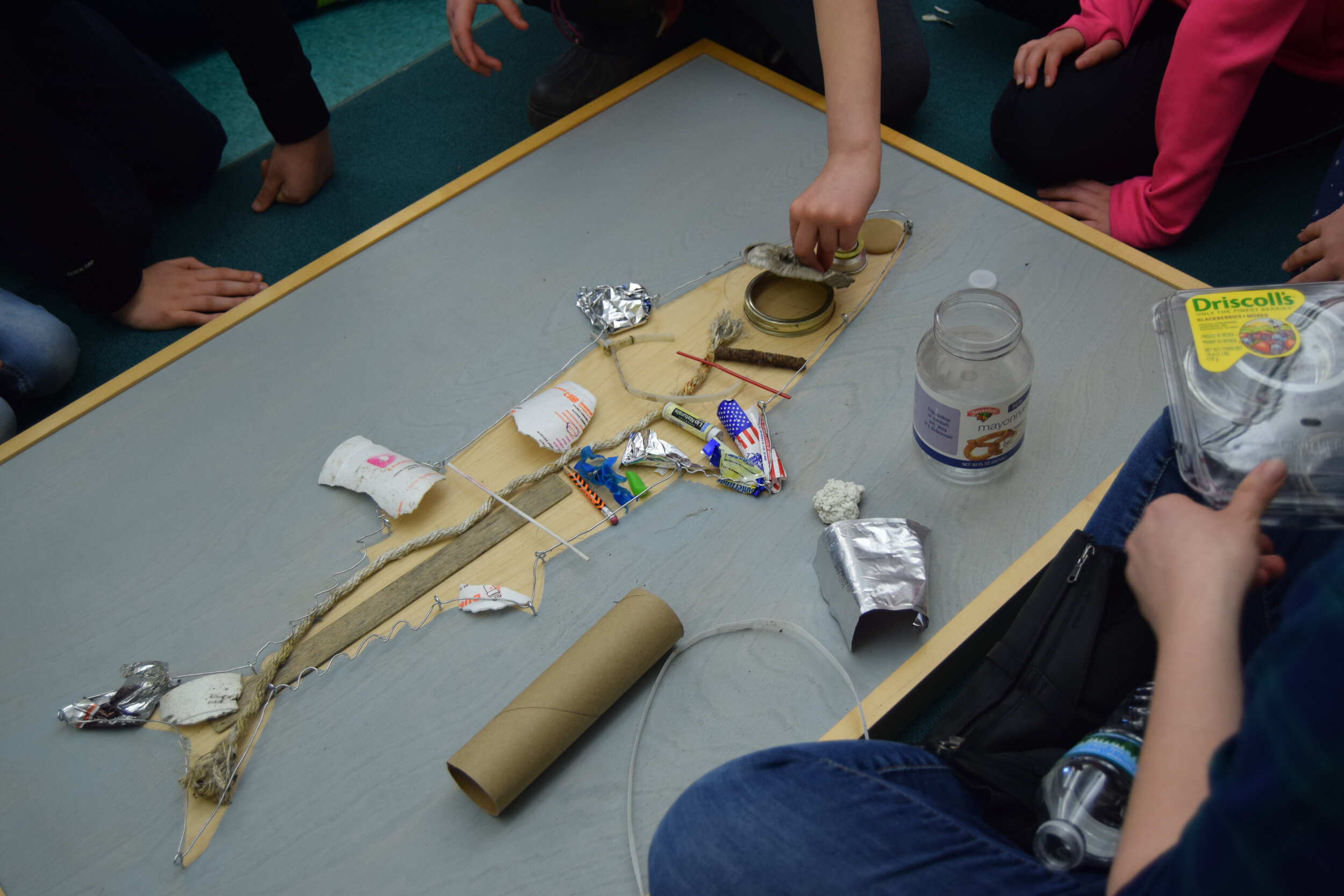






























artist highlight:
Stories students created this seascape out of used bottle caps to highlight the impact of single-use trash on our oceans.
Explore the Sustainability Unit for more lessons and activities around conservation and the environment.
Share a photo of your art projects by emailing edassistant@farnsworthmuseum.org.
Stories of the Land and Its People
The Stories of the Land and Its People program encourages student participants to learn about people and places in their community. For more student project examples, visit our Student Exhibitions page.
Developed by:
Andrea Curtis, Museum Educator
Farnsworth Art Museum
Ferolyn Curtis, Classroom Educator
Farnsworth Stories Program
Karen Talbot, Teaching Artist
Farnsworth Art Museum
Not Pictured: Wendy Jacques, Classroom Educator, Farnsworth Stories Program and Richard Wehnke, Art Teacher, Farnsworth Stories Program
Contributor(s):
Not Pictured: Kelsey Gibbs, Education Project Assistant, Farnsworth Art Museum
Developed by Andrea L. Curtis, Farnsworth Art Museum, Arts in Education Program, 2021















































































